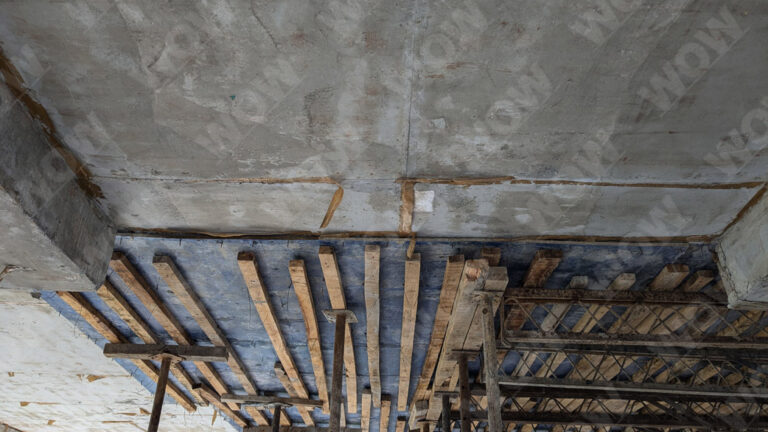When building a house, imagine needing a mould to hold the wet cement in place while it hardens. That mould is called slab shuttering, and the material you choose for this job is as important as the building itself. Traditionally, people have used materials like wood or steel, but times are changing, and now we have plastic shuttering sheets—a modern, sustainable, and far superior choice.
Let’s break down everything you need to know about slab shuttering, from materials to removal time, and explore why plastic shuttering boards are the future of construction.
What is Slab Shuttering, and Why Does Material Matter?
Slab shuttering is like the scaffolding for wet cement. It holds the concrete in place, gives it shape, and ensures it sets properly. Once the concrete is solid, the shuttering material is removed and often reused for other project parts.
The big question is: what material should you use for shuttering?
- Steel: Strong but heavy and expensive.
- Wood: Cheap but not durable—often warps and breaks after a few uses.
- Plywood: Better than plain wood but still has its issues, like peeling layers and low reusability.
- Plastic Shuttering Sheets: A modern marvel! Durable, lightweight, and eco-friendly. They’re the superheroes of the construction world, lasting for over 50 uses and saving costs in the long run.
Why Plastic Shuttering Sheets Are Taking Over
Plastic shuttering sheets aren’t just a trend; they’re solving real problems in construction. Let’s break it down:
Durability That Outlasts Plywood
Traditional plywood can only handle 4–6 uses before falling apart. Plastic shuttering boards, on the other hand, last over 50 uses. That’s like the difference between a cheap toy and a durable, long-lasting one—investing in something that lasts makes sense.
Eco-Friendly and Sustainable
These sheets are made from recycled plastic, which helps keep waste out of landfills and oceans. You contribute to a greener planet whenever you use a plastic shuttering sheet. Imagine building a house and saving the environment simultaneously—how cool is that?
Weather-Proof and Reliable
Plastic shuttering boards stay strong in rain, humidity, or heat. Traditional plywood absorbs moisture, warps, and becomes useless, but plastic sheets are resilient to bad weather.
Perfect for Prolonged Use
Have you ever had to leave your shuttering in place for weeks because of manpower shortages? With plywood, you’d come back to warped, peeling boards. With plastic, they’ll still be in perfect shape, ready to de-shutter smoothly and get reused again.
Comparing Plastic Shuttering Sheets with Traditional Materials
| Feature | Plywood | Plastic Shuttering Sheets |
| Reusability | 4–6 times | Over 50 times |
| Weather Resistance | Poor | Excellent |
| Eco-Friendliness | Made from wood, leads to deforestation | Made from recycled plastic |
| Cost Efficiency | Cheaper upfront, costly in the long run | Higher upfront, long-term savings |
| Durability | Prone to warping and delamination | Strong and reliable |
When Should You Remove Slab Shuttering?
Shuttering removal time for slab is critical for the structure’s strength. Take it off too early, and the slab might crack. Leave it too long, and you risk project delays. Here’s a simple guide:
- Small Slabs (up to 4.5m span): Remove after 14 days.
- Large Slabs (over 4.5m span): Wait at least 21 days.
- Beams and Arches: Give it 21–28 days to ensure full strength.
Here’s where plastic shuttering boards shine again. They stay intact even if you leave them on for extended periods due to delays. Shuttering plywood? It starts falling apart.
How Plastic Shuttering Sheets Inspire Safer and Smarter Construction
Smooth De-Shuttering:
Plastic shuttering boards de-shutter effortlessly, leaving a clean, polished surface. Builders often describe the process as “peeling off butter paper.”
Safer Work Environment:
These boards are lightweight yet strong, reducing accidents during installation and removal. Workers can handle them more quickly than heavy steel or delicate shuttering plywood.
Cost Savings Over Time:
With over 50 uses per board, recycled plastic boards save money in the long run, even if the upfront cost is slightly higher. You’re not just buying a product—you’re investing.
Why Builders Are Switching to Plastic Shuttering Boards
More and more builders are making the switch to plastic shuttering sheets. Why? Because they’re realising that sustainable materials aren’t just good for the planet—they’re also good for business. With their durability, reusability, and environmental benefits, plastic shuttering boards are becoming the gold standard in construction.
Conclusion
Slab shuttering work is the backbone of any construction project, and choosing the right slab shuttering material is critical. While traditional materials like plywood and steel have their place, plastic shuttering sheets are the future. They’re durable, eco-friendly, and cost-efficient, making them a win-win for builders and the environment.
So, think beyond the old ways next time you start a construction project. Choose materials that last, inspire, and contribute to a sustainable future. Choose plastic shuttering sheets—they’re not just building materials; they’re building a better world.

